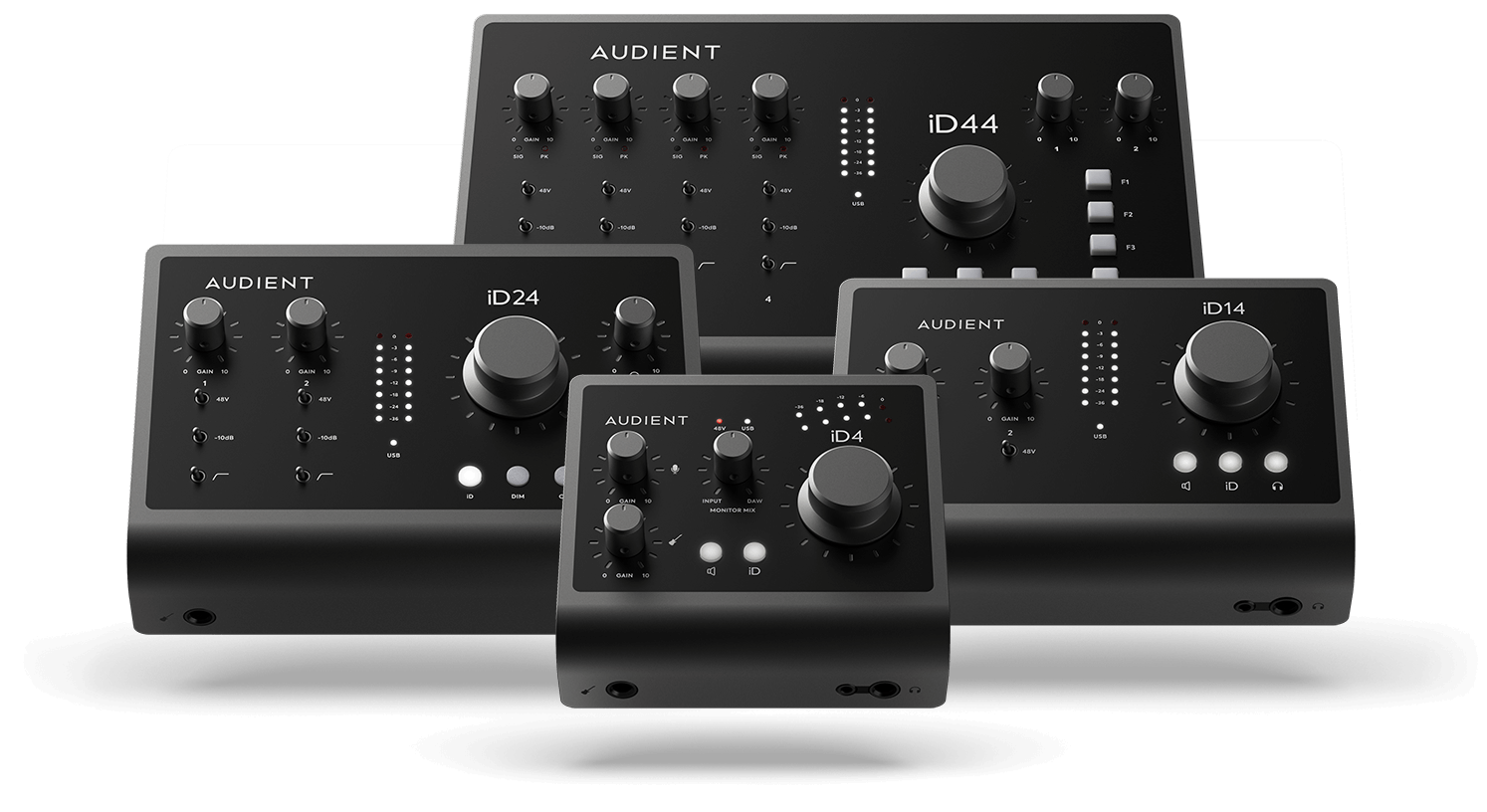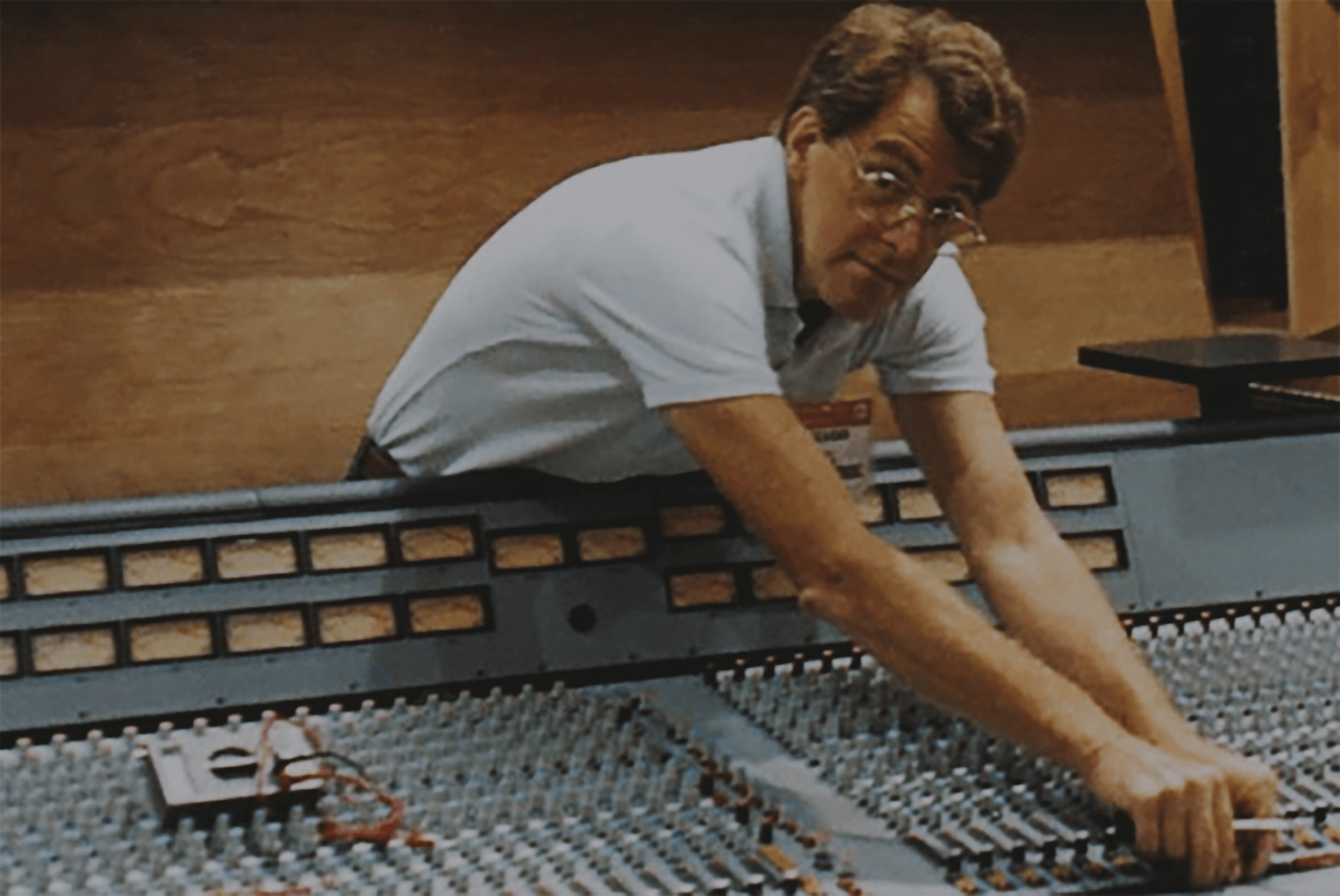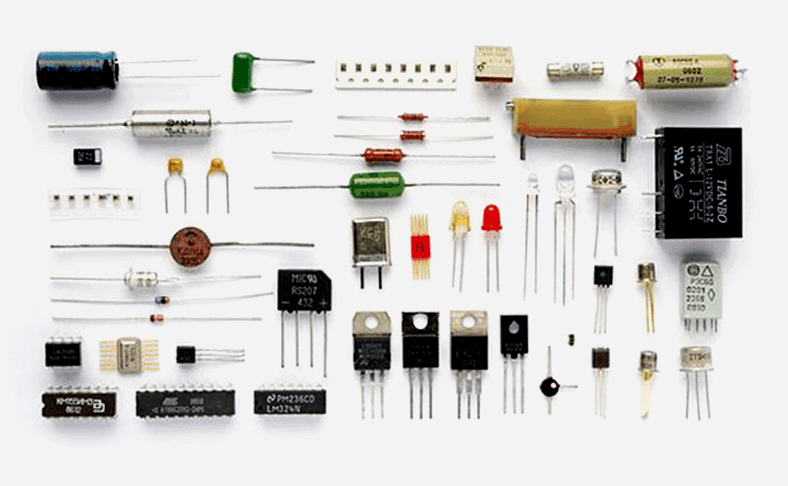Mic Pre Technology
We take an insight into why the Audient microphone preamplifier design has become so popular amongst so many professionals and hobbyists alike.
The Audient
mic pre guarantee
We use the same Class-A Audient Console mic pre design throughout our entire product range, whether you’re in the studio with an Audient console or on the road with iD4, you’re always guaranteed the same renowned Audient sound.

Can you hear
the difference?
We recorded sound examples using each of our products to let you hear the consistent quality we have worked so hard to achieve from our smallest audio interface iD4, all the way up to our ASP8024 Heritage Edition Console. Can you hear the difference?
How does it sound?
Due to its clean and transparent sound the Audient mic pre is often regarded as one of the most versatile mic pres available, making it the go to mic pre for thousands of professionals, top studios and home recordists alike.



Character
Wide Bandwidth
Flexible Topology
Clean, punchy with a
touch of warmth
Preserves your audios
transient detail
Optimised gain range
0 – 70db gain



Low Noise Floor
Circuitry
Transformer-less
30,000 times quieter
than the signal level
Discrete Class-A high
grade op amp design
RF immune input stage
for detailed resolution
20+
years in the making
Designed by David Dearden (of DDA & Advision Studios) back in 1997 the Audient mic pre is an all discrete high grade op amp design that delivers low noise, low distortion, and high common mode rejection at all gain levels… offering a faithful reproduction of the source with just enough colour to give the signal some character.

The magic of Dearden

The microphone preamplifier has historically been the most difficult circuit block to design and also the block where designers have striven to express their individuality and David Dearden has always been on a quest for musical transparency. Here he outlines his design:
Quality begins with
the first steps of design
“A successful mic pre doesn’t just have to amplify a low level signal up to something which is more useable. It must also be protected against external attack such as static, phantom power and Radio Frequency Interference (RFI).
This is where component choice is vital, especially the low noise transistors and even passive elements such as resistors and RFI filters. Finding input transistors suitable for low impedance sources has always been a problem and after extensive evaluation we selected a unique transistor originally designed for Vinyl player preamps, which was perfect for the job!
Since then we have continued to innovate this key part of the Audient ‘sound’ and after much sonic evaluation, implemented a new transistor with similar characteristics in a surface mount (SMT) transistor package.”

“Although, surface mount components are not always the same as their traditional equivalents. Sometimes they are even better! We use a mixture of SMT & traditional parts based upon one critieria – which one offers the best performance for a given role.
However, resistors are not in some areas, especially when it comes to mic amp electronics which require low resistances and high currents to minimize noise. In certain critical areas of a high gain circuit, standard SMT parts were noticeably inferior, exhibiting more noise. In these cases there was little option but to remain with what was known to be good old fashioned metal film resistors with larger bodies.
The best choice of components and the most elegant of designs are easily ruined by careless PCB (printed circuit board) layouts. Neat doesn’t necessarily mean optimum.”
“An understanding of the circuit operation and current paths is required for best results and I’ve spent over 20 years striving for continuous improvement in our circuit design and how our products sound. To this day my mic pre design is still being used all over the world – I must’ve done something right! Think like an electron!”

Mic Pre Technology
We take an insight into why the Audient microphone preamplifier design has become so popular amongst so many professionals and hobbyists alike.
The Audient
mic pre guarantee
We use the same Class-A Audient Console mic pre design throughout our entire product range, whether you’re in the studio with an Audient console or on the road with iD4, you’re always guaranteed the same renowned Audient sound.

Can you hear
the difference?
We recorded sound examples using each of our products to let you hear the consistent quality we have worked so hard to achieve from our smallest audio interface iD4, all the way up to our ASP8024 Heritage Edition Console. Can you hear the difference?
How does it sound?
Due to its clean and transparent sound the Audient mic pre is often regarded as one of the most versatile mic pres available, making it the go to mic pre for thousands of professionals, top studios and home recordists alike.

Character
Clean, punchy with a
touch of warmth

Wide Bandwidth
Preserves your audios
transient detail

Flexible Topology
Optimised gain range
0 – 70db gain

Low Noise Floor
30,000 times quieter
than the signal level

Circuitry
Discrete Class-A high
grade op amp design

Transformer-less
RF immune input stage
for detailed resolution
20+
years in the making
Designed by David Dearden (of DDA & Advision Studios) back in 1997 the Audient mic pre is an all discrete high grade op amp design that delivers low noise, low distortion, and high common mode rejection at all gain levels… offering a faithful reproduction of the source with just enough colour to give the signal some character.

The magic
of Dearden
The microphone preamplifier has historically been the most difficult circuit block to design and also the block where designers have striven to express their individuality and David Dearden has always been on a quest for musical transparency. Here he outlines his design:

Quality begins
with the first
steps of design
“A successful mic pre doesn’t just have to amplify a low level signal up to something which is more useable. It must also be protected against external attack such as static, phantom power and Radio Frequency Interference (RFI).
This is where component choice is vital, especially the low noise transistors and even passive elements such as resistors and RFI filters. Finding input transistors suitable for low impedance sources has always been a problem and after extensive evaluation we selected a unique transistor originally designed for Vinyl player preamps, which was perfect for the job!
Since then we have continued to innovate this key part of the Audient ‘sound’ and after much sonic evaluation, implemented a new transistor with similar characteristics in a surface mount (SMT) transistor package.”

“Although, surface mount components are not always the same as their traditional equivalents. Sometimes they are even better! We use a mixture of SMT & traditional parts based upon one critieria – which one offers the best performance for a given role.
However, resistors are not in some areas, especially when it comes to mic amp electronics which require low resistances and high currents to minimize noise. In certain critical areas of a high gain circuit, standard SMT parts were noticeably inferior, exhibiting more noise. In these cases there was little option but to remain with what was known to be good old fashioned metal film resistors with larger bodies.
The best choice of components and the most elegant of designs are easily ruined by careless PCB (printed circuit board) layouts. Neat doesn’t necessarily mean optimum.”
![]()
“An understanding of the circuit operation and current paths is required for best results and I’ve spent over 20 years striving for continuous improvement in our circuit design and how our products sound. To this day my mic pre design is still being used all over the world – I must’ve done something right! Think like an electron!”

